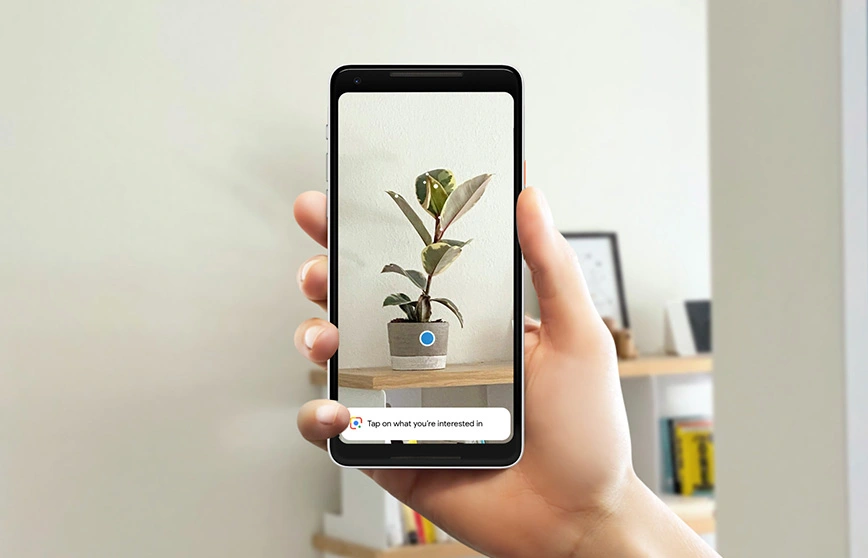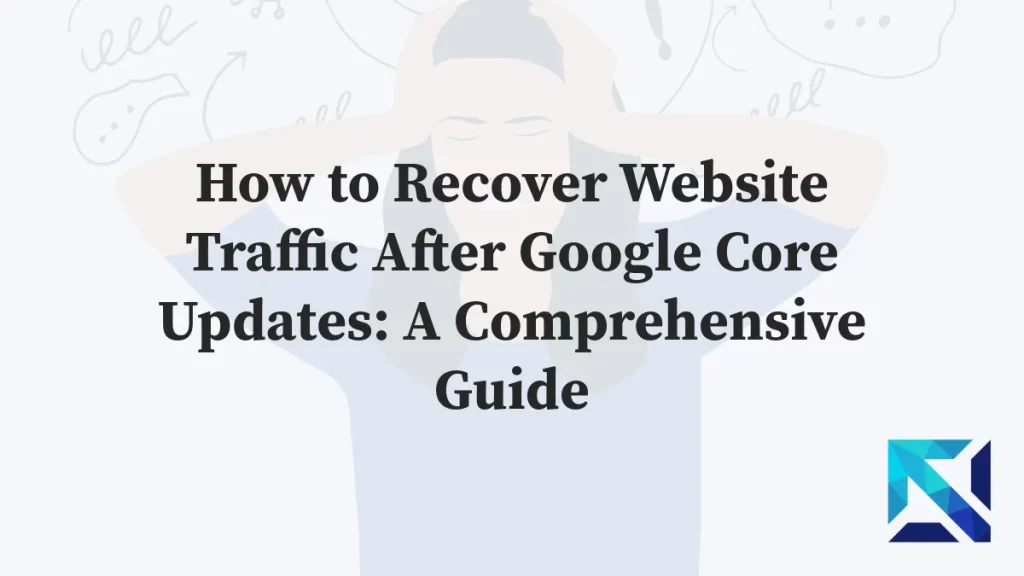In an era where a picture is worth a thousand clicks, visual search is revolutionizing the way we find information online. As we stride into 2024 and beyond, optimizing for visual search has become a critical component of any comprehensive SEO strategy. This article delves into the world of visual search, exploring its impact on SEO and providing actionable techniques to enhance your image and video discoverability.
Understanding Visual Search: A Paradigm Shift in SEO
Visual search technology allows users to search using images rather than text. Whether it’s through reverse image searches, image recognition, or augmented reality features, visual search is changing the game for both users and marketers.
The Power of Google Visual Search
Google, the undisputed leader in search, has been at the forefront of visual search innovation. Google Lens, introduced in 2017, has transformed smartphones into powerful visual search tools. With Google visual search, users can:
- Identify objects, plants, and animals
- Find similar products and where to buy them
- Translate text in real-time
- Explore landmarks and learn about their history
This technology is not just a novelty; it’s becoming an integral part of how people interact with the world around them.

Beyond Google: The Visual Search Ecosystem
While Google visual search is prominent, other platforms are also making waves in this space:
- Pinterest Lens: Allows users to search for ideas based on real-world images
- Amazon StyleSnap: Helps shoppers find fashion items similar to a photo they’ve taken
- Bing Visual Search: Offers capabilities similar to Google Lens
As these technologies advance, the importance of visual search optimization grows exponentially.
Visual Search Optimization: A New Frontier in SEO
Visual search optimization involves techniques to make your images and videos more discoverable and relevant in visual search results. Here’s why it matters:
1. Changing User Behavior: As more users embrace visual search, businesses that optimize for it gain a competitive edge.
2. E-commerce Boost: Visual search can significantly increase conversion rates in online shopping.
3. Enhanced User Experience: It provides a more intuitive way for users to find what they’re looking for.
4. Local SEO Impact: Visual search often has a strong local component, benefiting businesses with physical locations.
Key Techniques for Visual Search Optimization
1. High-Quality Images: Use clear, high-resolution images that accurately represent your content or products.
2. Descriptive File Names: Instead of “IMG_12345.jpg”, use “red-leather-crossbody-bag.jpg”.
3. Alt Text Optimization: Write detailed, keyword-rich alt text that describes the image content.
4. Schema Markup: Implement schema.org markup for images and videos to provide search engines with more context.
5. Image Sitemaps: Create and submit image sitemaps to help search engines discover and index your visual content.
6. Optimize Image Context: Ensure the surrounding text and page content are relevant to the image.
7. Responsive Images: Use responsive design to ensure images display properly on all devices.
8. Varied Image Angles: For products, include images from multiple angles to improve match potential.
9. Video Thumbnails: Create compelling thumbnails for videos to increase click-through rates.
10. Image Compression: Optimize image file sizes for faster loading without sacrificing quality.
The Visual Search Optimization Checklist
To ensure you’re covering all bases in your visual search optimization efforts, use this checklist:
- Images are high-quality and relevant to the content
- File names are descriptive and keyword-optimized
- Alt text is detailed and includes target keywords
- Schema markup is implemented for images and videos
- Image sitemap is created and submitted to search engines
- Page content provides context for images
- Images are responsive and display well on all devices
- Product images show multiple angles (if applicable)
- Video thumbnails are eye-catching and relevant
- Images are compressed for optimal loading speed
- Structured data is used to provide additional context
- Image dimensions are appropriate for the content
- Copyright information is clear and respected
- Images are unique and not duplicated across the site
- Video content includes transcripts or closed captions
Real-World Examples of Visual Search Optimization Success

Case Study 1: The Fashion Retailer
A mid-sized online fashion retailer implemented a comprehensive visual search optimization strategy:
- They renamed all product images with descriptive, keyword-rich file names.
- Alt text was rewritten to include color, style, and occasion-specific keywords.
- They added schema markup to all product images.
- Multiple angle shots were added for each product.
Results: Within 3 months, they saw a 24% increase in organic traffic from image searches and a 13% boost in conversion rates from visual search users.
Case Study 2: The Travel Blogger
A travel blogger focusing on European destinations optimized her visual content:
- She implemented geotags on all images.
- Alt text was optimized to include location names and descriptive landmarks.
- She created a dedicated image sitemap and submitted it to Google.
- Video content was enhanced with location-specific tags and descriptions.
Results: Her images started appearing in Google visual search results for specific landmarks, leading to a 45% increase in blog traffic over six months.
Case Study 3: The Local Bakery
A small local bakery embraced visual search optimization:
- They took high-quality photos of all their products and optimized file names and alt text.
- They added schema markup to their images, including price and availability information.
- They encouraged customers to take and share photos, building a repository of user-generated content.
Results: Their products began appearing in local visual searches, resulting in a 30% increase in foot traffic and online orders.
Advanced Techniques for Visual Search Domination
As visual search technology evolves, staying ahead of the curve is crucial. Here are some advanced techniques to consider:
1. AI-Powered Image Recognition
Leverage AI tools to analyze your images and suggest optimization improvements. These tools can help identify objects, scenes, and even emotions in images, allowing for more accurate tagging and description.
2. Augmented Reality Integration
For e-commerce sites, integrating AR features can significantly boost visual search performance. Allow users to “place” products in their environment, increasing engagement and providing more visual data for search engines.
3. Visual Storytelling
Create visual narratives that connect multiple images or videos. This can increase user engagement and provide more context for visual search algorithms.
4. Visual Search Analytics
Implement analytics tools that specifically track visual search performance. Monitor which images are performing well and why, and use these insights to refine your strategy.
5. Voice and Visual Search Synergy
As voice search continues to grow, consider how it intersects with visual search. Optimize for queries that might combine voice and visual elements, such as “Show me red shoes like these.”
Maximizing Bing Visual Search Visibility: A Strategic Approach
Bing Visual Search, a prominent feature of the Bing search engine, offers a unique opportunity for businesses to increase their online visibility and attract new customers. By strategically optimizing your website’s images for Bing Visual Search, you can significantly improve your chances of appearing in relevant image search results.

Key Strategies for Bing Visual Search Optimization:
- High-Quality Image Assets: Invest in high-resolution, visually appealing images that accurately represent your products or services. Ensure that the images are clear, well-lit, and free from distortion.
- Relevant File Names: Use descriptive file names that accurately reflect the content of the image. For example, instead of “image123.jpg,” use “blue-dress-collection.jpg.”
- Comprehensive Alt Text: Provide detailed and informative alt text for each image. The alt text should accurately describe the image’s content and be helpful to visually impaired users.
- Strategic Keyword Placement: Incorporate relevant keywords into the image file names, alt text, and surrounding text to improve your chances of ranking higher in Bing Visual Search results.
- Optimized Image Metadata: Ensure that your image metadata is complete and accurate. Include information such as the image title, description, keywords, and copyright information.
- Leverage Image Sitemaps: Create an image sitemap to help Bing discover and index your images more efficiently. An image sitemap provides information about your website’s images, including their URLs, last modified dates, and dimensions.
- Monitor and Analyze Performance: Regularly track your website’s performance in Bing Visual Search results. Use analytics tools to identify which images are performing well and which ones may need further optimization.
- Stay Updated with Bing’s Guidelines: Keep up-to-date with Bing’s guidelines for image optimization. Bing may periodically update its algorithms and guidelines, so it’s important to stay informed about the latest best practices.
The Future of Visual Search: Trends to Watch
As we look towards 2025 and beyond, several trends are likely to shape the future of visual search:
1. 3D Object Search: As AR and VR technologies advance, searching for 3D objects will become more common.
2. Emotional Recognition: Visual search may evolve to recognize and categorize images based on the emotions they evoke.
3. Real-Time Visual Translation: Improvements in AI will make real-time visual translation more accurate and widespread.
4. Shoppable Video Content: As video consumption increases, expect more platforms to make video content directly shoppable through visual search.
5. Privacy and Ethics: As visual search becomes more powerful, expect increased focus on privacy concerns and ethical use of the technology.
Conclusion: Embracing the Visual Search Revolution
The rise of visual search represents a significant shift in how users interact with search engines and discover content online. By implementing the techniques and strategies outlined in this article, you can position your brand at the forefront of this revolution.
Remember, visual search optimization is not a one-time task but an ongoing process. Regularly review and update your visual content, stay informed about new technologies and best practices, and always prioritize the user experience.
As we move into an increasingly visual digital landscape, those who master the art and science of visual search optimization will have a decisive advantage. Whether you’re an e-commerce brand, a content creator, or a local business, the time to optimize for visual search is now.
By embracing this change and implementing robust visual search optimization strategies, you’re not just preparing for the future – you’re actively shaping it. So, grab your camera, fire up your image editing software, and start your journey towards visual search domination. The eyes of the internet are waiting to discover what you have to offer.
What is visual search and how does it differ from traditional text-based search?
Visual search allows users to search the web using images or videos instead of text. It's a more intuitive way to find information, especially for products or visuals that are difficult to describe in words.
Why is visual search becoming increasingly important for SEO?
Visual search is gaining popularity as users seek more engaging and interactive ways to find information. By optimizing your images and videos for visual search, you can increase your visibility and attract more organic traffic.
What are the key factors to consider when optimizing images for visual search?
Key factors include:
- High-quality images: Ensure your images are clear, well-lit, and relevant to your content.
- Descriptive file names: Use descriptive file names that accurately reflect the image's content.
- Alt text: Provide detailed and informative alt text for each image.
- Metadata: Optimize image metadata, including title, description, and keywords.
- Image sitemaps: Create an image sitemap to help search engines discover your images.
How can I optimize videos for visual search?
To optimize videos, consider:
- Engaging thumbnails: Use eye-catching thumbnails that accurately represent your video's content.
- Relevant titles and descriptions: Use descriptive titles and descriptions that include relevant keywords.
- Closed captions: Add closed captions to make your videos accessible to a wider audience.
- Video sitemaps: Create a video sitemap to help search engines index your videos.
What tools can I use to monitor my performance in visual search?
You can use tools like Google Search Console and Google Analytics to track your website's performance in visual search. These tools can provide insights into which images and videos are performing well and where you can improve your optimization efforts.




